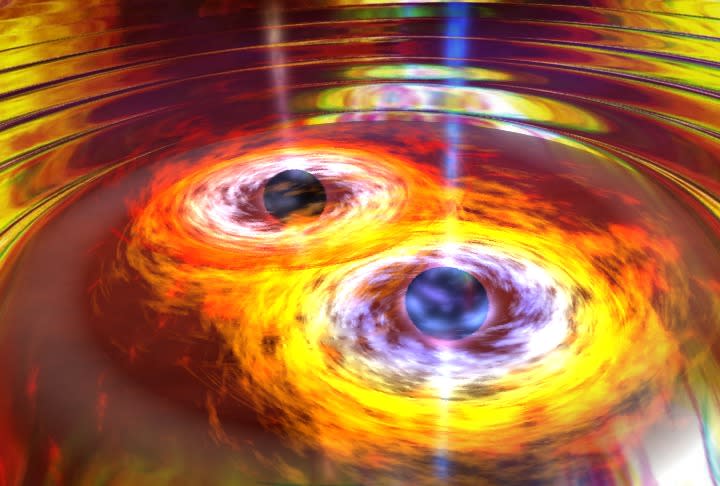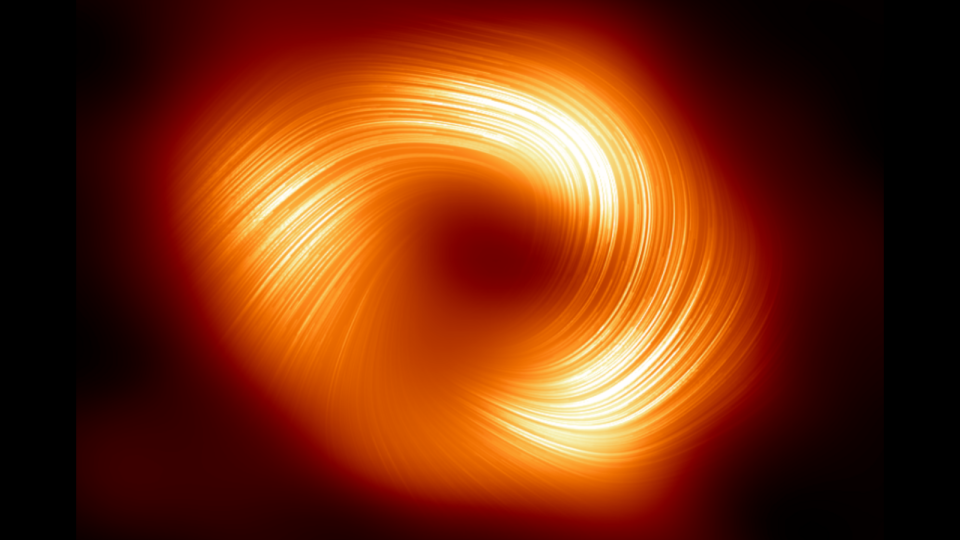Black holes are monstrous, monolithic regions of space and time that have captured humanity’s imagination. Some are created by the death and collapse of a massive star; However, no single star can give birth to such massive black holes. These are supermassive black holes lurking at the hearts of galaxies with masses equivalent to millions or even billions of suns.
Giant black holes like this are believed to have once formed when two smaller black holes collided and merged. And now scientists wonder whether we can learn the family tree of a black hole by working backwards through generations.
Relating to: How do some black holes get so big? The James Webb Space Telescope may have an answer
If there is one cosmological object or event designed to be mysterious, it is the black hole. This region of space is marked by a boundary called the event horizon, which is the barrier between our universe and everything contained within the void. Therefore, it is impossible to receive signals and therefore information from beyond this barrier.
In addition, black holes have very few defining characteristics; This is something theoretical physicist John Wheeler once described as “black holes have no hair.” This means that, unlike looking at a child’s hair color or skin tone and making a rough guess about their parents’ hair color and texture, “hairless” supermassive black holes give no clues to their ancestry – or does it?
Not all black holes are created equal
Imre Bartos is a physicist at the University of Florida who theorizes that the limited properties of supermassive black holes (mass, spin, and electric charge) may actually obscure details of the original black hole assembly line that created them.
He says the standard picture of black hole birth, which involves the death and collapse of massive stars, cannot explain the formation of the massive black holes we see today. This includes both supermassive black holes and relatively smaller, intermediate-mass black holes with masses of about 100 to 100,000 times the mass of the sun.
“Stars have some sort of limit to how large they can grow without breaking apart on their own. If a star gets too big, then it’s going to explode before it has time to form this dense core that can seed the black hole,” Bartos told Space.com. “We expect a natural limit on how massive black holes formed from the death of stars can be. This mass is something like 50 times the mass of our sun. So, it’s a pretty big mass, but nowhere near as big as the mass we see in supermassive or intermediate-sized black holes.” “
This means that there must be another process that creates the most egregious black holes, and observations of tiny ripples in space-time called gravitational waves suggest that such a process could be the subsequent collisions and mergers of generations of increasingly larger black holes.
“How can we do detective work to go back in time and see what actually happened in the environment where black holes merge? Can we tell anything about the ancestors of black holes?” Bartos wondered.


Bartos thinks understanding what causes black holes to come together is the key to understanding how the universe evolves and even getting to the bottom of the basic laws of physics.
“We want to learn, and so far we haven’t fully understood what actually happens in the universe that makes black holes come together and merge,” Bartos said. “This cannot just be a random process. There must be a mechanism that brings black holes together and combines them. We are trying to understand this from the limited features we have.”
He added that by looking at the mass of a supermassive black hole and the gravitational waves resulting from the merger that created it, researchers can estimate the masses of the black holes that must have coalesced to form it in the first place. What’s more, Bartos and his colleagues suggest that observing how fast the black hole is spinning could also reveal how fast the parent black holes that created it are spinning.
According to Bartos, looking at the electromagnetic signals coming from the region where these mergers occur can also reveal how they interact with their environment. For example, were black holes feeding on the gas and dust around them to facilitate their own growth?
Black holes also have grandparents
Bartos added that black holes with a mass of 50 times more than the sun can be found in regions where many other black holes are found. This means that, just like our parents, grandparents, and great-grandparents, black hole mergers are probably not unique events, and the largest black holes result from repeated generations of mergers.
This generational event will not only result in mass accretion, but subsequent daughter black holes will also gain angular momentum from their ancestors. Bartos said this means that black holes must spin faster as they grow larger.
“If we detect a higher return, it could be an indicator of mergers that have occurred before,” Bartos said. “For some of the massive black holes we’ve seen so far, we see an indication of the high spin we would expect from these successive mergers.”
While Bartos thinks the idea of black holes having “grandparents” is fascinating and believes we may be able to uncover some details of black hole parents from gravitational wave observations, the story of black hole grandparents may have been lost to time.
“It is not possible for us to detect previous mergers directly from gravitational wave observations. We would have to run the detectors for millions of years, which is very unlikely,” he said.


Related Stories:
— Tiny black holes left over from the Big Bang may be prime dark matter suspects
— What is the black hole event horizon (and what happens there)?
— Scientists find black hole powering a source of molecular gas in the ancient universe
It is thought that the chain of mergers that will form a supermassive black hole will take at least 1 billion years, but these cosmic giants are observed in the universe only a few hundred million years after the Big Bang. These observations are courtesy of the James Webb Space Telescope (JWST). This leaves a challenge. Scientists still need to explain exactly how these cosmic giants grew so quickly. But perhaps the clues lie in the ancestral mechanism itself.
“If we see the processes that merge these black holes, we can see what the starting points of supermassive black holes in galactic centers are,” Bartos said. “We can see how fast the process is, how widespread it is, and this could help us understand how big a role this might play in the process of formation of more massive black holes.”
Bartos hopes that as gravitational wave detectors become more sensitive, humanity will detect these ripples in space and time from more distant and therefore earlier black hole mergers. This means that we must continue to learn more and more about how black hole growth has progressed throughout the 13.8 billion year history of the universe.
“I’m so excited to see things for the first time and discover things that go beyond the limits of our knowledge,” Bartos concluded. “When we look at the extremes, we see that everything is very different from what we are used to. Black holes are also extremes in many ways.”